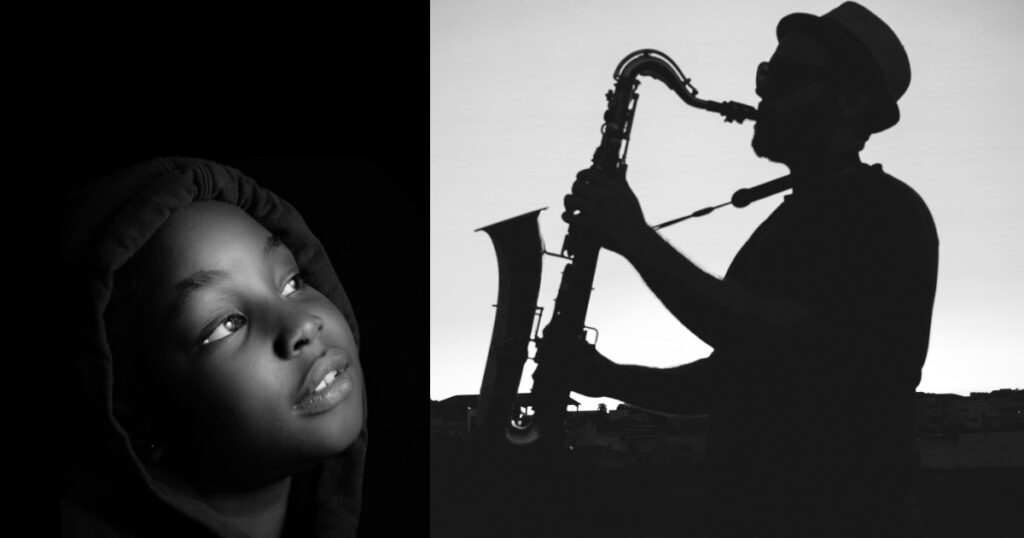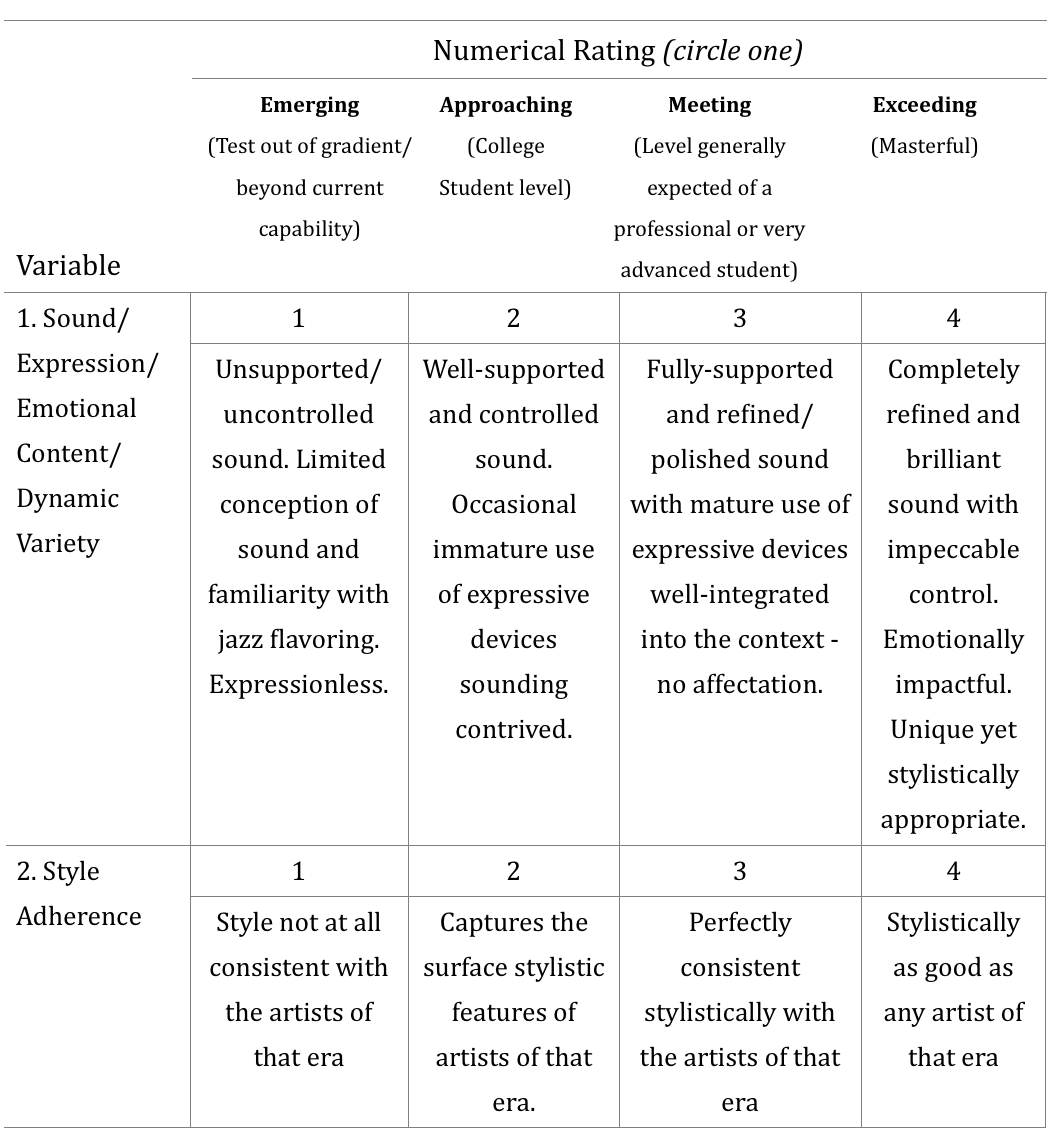
JAZZ IMPROVISATION ACROSS TRADITIONAL AND MODERN STYLES: ASSESSMENTS IN A SIX-WEEK UNIT WITHIN A UNIVERSITY-LEVEL JAZZ IMPROVISATION COURSE
PART 2 OF 4: FORMATIVE ASSESSMENT – SOUND, EXPRESSION, STYLE
Fathers as Role Models – Emulating the Masters
Ray P. Zepeda
Last month, I offered a sobering Memorial Day tribute to those whose sacrifice preserved our freedom to create and play this form of music sometimes referred to as “America’s classical music.” For this second of four installments, I would like to center the discourse around a different but related type of respect, one that still holds the object of veneration up as a heroic figure in the observer’s estimation but which ultimately derives its gravitas from repeated direct and personal interactions, is experientially based, and is decidedly more formative.
Admittedly, it is almost never intentional that we as young men end up becoming our fathers. How many times did we as young boys steel ourselves with the affirmation that it would never be so? Yet, if we were to be completely honest with ourselves, it is the daily observation of behaviors, both beneficial and deleterious, in response to life situations that formed the basis of how we negotiate our adult lives because we, perhaps subconsciously, perhaps not, saw the payoffs of such actions, some of which may be temporary solutions that prove destructive in the long term, others which may set us on the righteous path.
Our formative years as jazz improvisers are not too different and are, in most cases, even more deliberately emulative. Artists and genres that speak to us most directly during these years tend to have the greatest influence on our playing throughout our careers, of course, not that one cannot assimilate other styles later in life as often happens. Rare is the unstudied sui generis iconoclast that contributes anything beyond eccentricity and then assumes a place of importance. The ones seemingly fitting of that description often belie an early life of structured pedagogy and conventional influences upon further investigation.
It would therefore be folly for any developing improviser today to eschew such detailed study of the masters. John Madden or Yogi Berra might say, “If you don’t sound like anything, you don’t sound like anything.” In other words, anyone can sound like nobody if nobody would want to sound like they do. Emulative study is neither imitation nor evidence of a paucity of invention. Even a deliberate attempt to imitate certain artists will result in your own unique distillation of these masters with the underpinning of their collective craft. Regurgitation of isolated licks from a master’s solo transcribed by someone else without internalizing their style might provide some short-term benefit but will never set you on the path to your own mastery. Every aspect of a master’s style must be studied in depth. Fewer masters, more depth is more effective than the opposite. With only one father, no wonder we often end up so much like him!
Wishing you and yours a most happy Father’s Day!
Rubric
Performance Assessment
In other Formative Assessments throughout this Unit, I have scored each chorus of each soloist’s improvisation across the Technical Execution/Fluidity, Time Feel/Rhythmic Variety and Development, and Note Selection/Melodic Construction and Development dimensions on a scale from 1 to 4. This Formative Assessment will focus on the Sound/ Expression dimension and the Style Adherence dimension. Each soloist will get three choruses of each of the following: (1) a Traditional style (2) a Modern style, both of the soloist’s choosing, over a tune of the soloist’s choosing. You may use a rhythm section from the class or, for the more technologically savvy amongst you, the original recording with the soloist muted. The objective is that the student will be able to perform convincingly in both styles, exhibiting all the nuances and characteristics typical of that era.
Traditional styles: Ragtime, Dixieland/Trad. Jazz, Early to Late Swing, Early R&B, etc.
Modern styles: Bebop, Hard Bop, West Coast/Cool, Post Bop, Modal Jazz, Progressive Jazz/Third Stream, Fusion, Contemporary/Smooth Jazz, etc.
The highest chorus score of each solo will be taken for each of the evaluations – (1) and (2). Each soloist will therefore play six total choruses.
Table 1
Improvisation Evaluation Scale: Traditional / Modern Jazz [adapted in part from Smith (2009)]

Comments:
Feedback from Scale Assessment:
3 and above: Exhibits or exemplifies the parameter or characteristic nearly perfectly throughout
2: Exhibits the parameter or characteristic moderately or mostly throughout
1: Does not exhibit the parameter or characteristic to any measurable degree
References
Smith, D. (2009). Development and Validation of a Rating Scale for Wind Jazz Improvisation Performance. Journal of Research in Music Education, 57, 217-235.